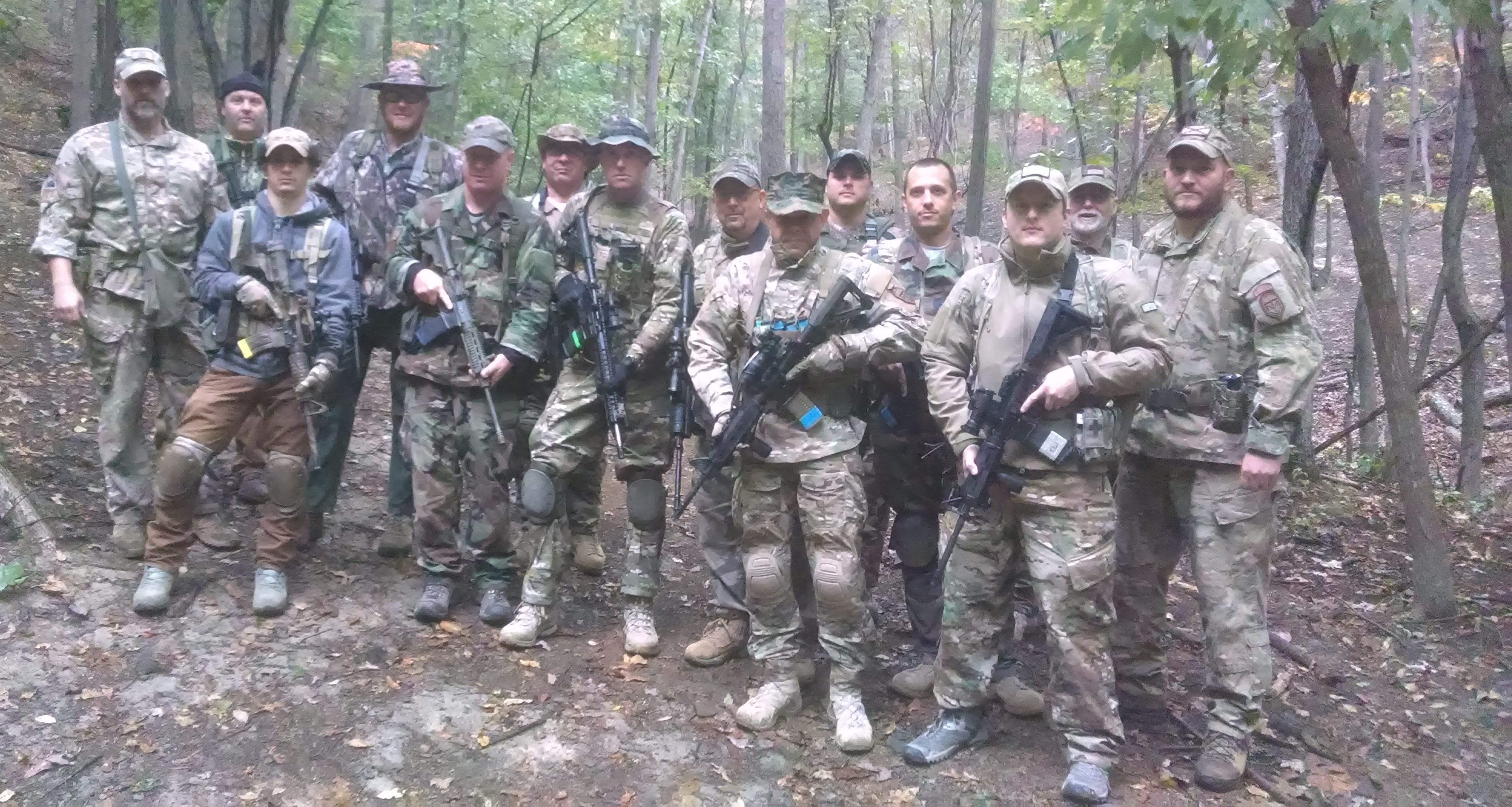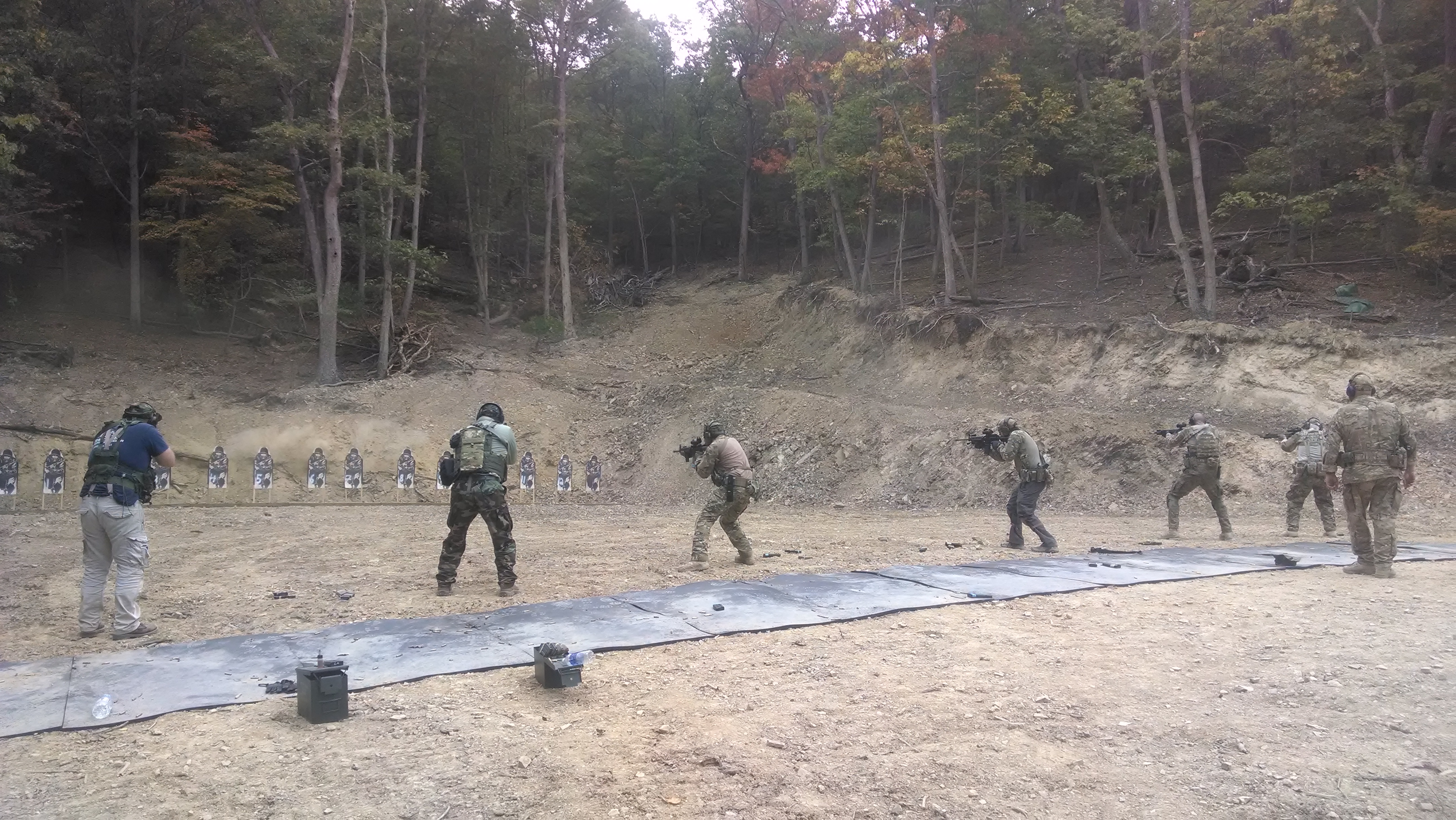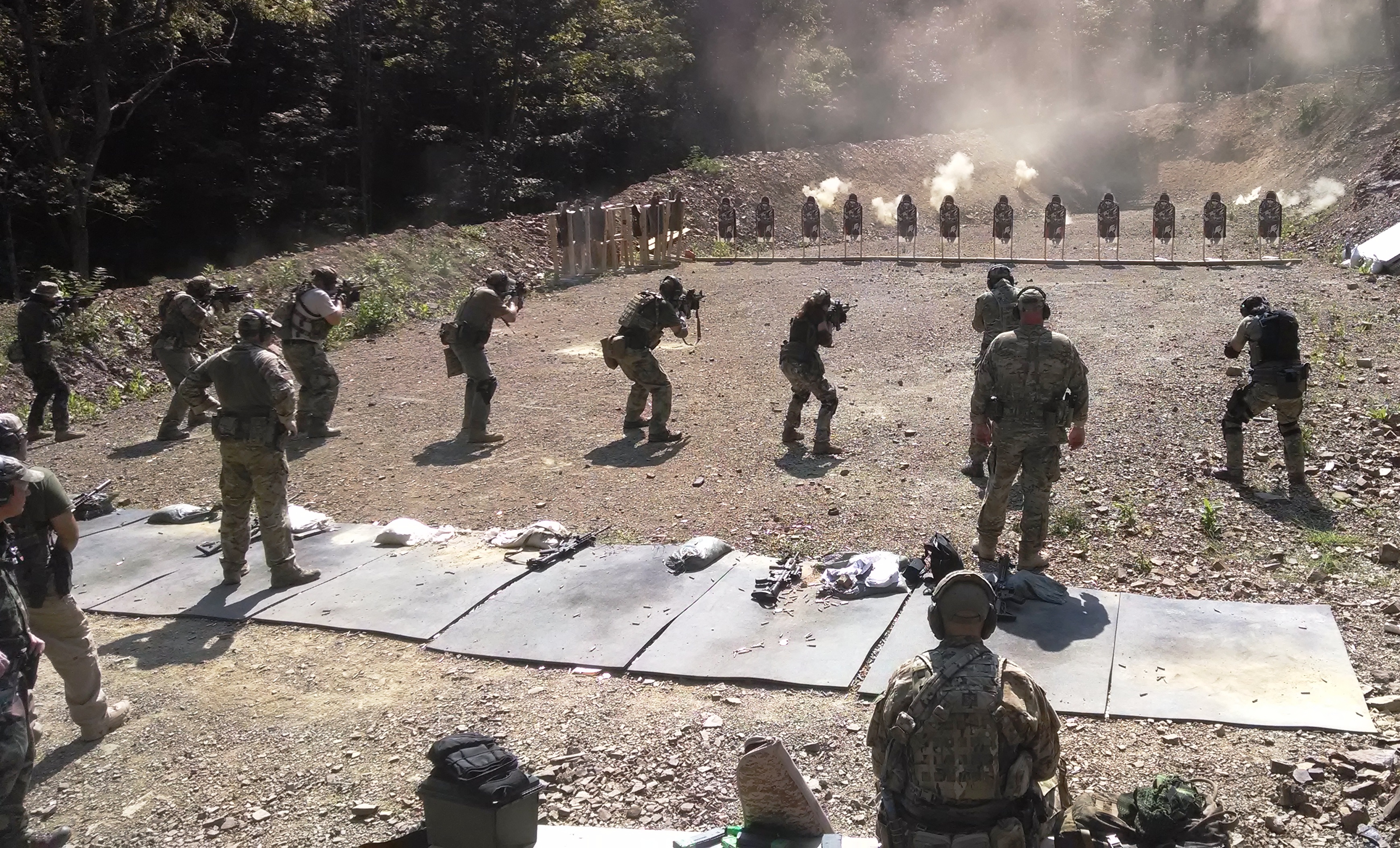
Why I Chose Max Velocity Tactical For Training:
Like many people reading this site, I am concerned about the future safety of my family. I have spent literally thousands of hours since 2007 studying the global financial arithmetic, along with the associated multiple Ponzi schemes and fraud etc. My conclusion is that there is a high probability that a collapse of the economy will occur with or without war. Historically this usually results in chaos, violence, and food shortages, etc. Maybe sooner than later, but hopefully I am wrong. With this in mind, trying to protect my family is of utmost concern. The hoarding of beans, bullets, band aids, and guns is obviously not sufficient. The bottom line is that excellent, realistic tactical training that has specifically been modified for a civilian, who is interested in protecting his family, is what I began to look for. In order to identify where to train I basically followed a similar approach that I used when deciding on where to train in surgery. To digress for a moment, it is my opinion that engaging in tactical training is very similar to training in surgery. Both involve preparation for close encounters with death. Both require a substantial knowledge base in order to make good decisions, and both incorporate a physical skill set that is enhanced with repetition and excellent mentoring. In other words your ability to be tactically dangerous and avoid the death of yourself or your family/tribe is in some ways similar learning to be a good surgeon. The quality of the final product, surgeon or war fighter is based on the quality of the training, volume and realism. When I was a medical student at the University of Iowa I knew that I would have to train in general surgery for 5 years prior to training in cardiovascular surgery. I also knew that I wanted hard core training with extensive exposure to all aspects of trauma, especially the penetrating type during this first 5 years. If I stayed in Iowa my trauma experience would have been primarily automobile and farm accidents. Essentially I spent hours researching every residency training program in the country. I even talked to the residents in many of the training programs that I was interested in to get the inside scoop, not the propaganda. After researching different residency training programs, I listed Detroit as my first choice and fortunately that is where I spent the next 5 years. This gave me tremendous hands on operative volume with massive exposure to all types of trauma while being mentored by professors who were leading experts in trauma surgery. When I began to decide on where to train in cardiac surgery I knew that I wanted a high volume hands on experience with the full range of cardiac, vascular, and thoracic surgery. The dirty little secret is that there are many, many cardiac surgery training programs where you do very little actual operating and a lot of 1<sup>st</sup> assisting. The problem is that some professors are not confident enough in their abilities to guide you through a complex cardiac surgical procedure and still have a good result. This type of training provides the trainee with a false sense of one’s own abilities. To me this is like doing all your tactical training on a square range. Or doing small unit tactics in the woods with blanks or training under the watchful eye of someone who has questionable credentials when it comes to war fighting. Essentially I wanted realistic training that was high volume, intense and physical. The other factor that affected my thought process is that prior to college I was a United States Marine. Almost 40 years ago in 1975 I went to boot camp at Parris Island and spent the next four years as an enlisted Marine. Several concepts stayed with me.
Marksmanship and tactical training are perishable skills.
The knowledge base supporting these skills is constantly evolving.
Also during my enlistment I was exposed to many great leaders who were non- commissioned officers (NCO’s). I found that the best of the NCO’s from a war fighting standpoint shared the following traits, in no particular order:
Multiple tours of combat. (Most volunteered to go back into combat after the first tour)
They were people who had demonstrated repeatedly that they function very, very well in combat.
They were hard, sometimes harsh during training but we knew that it was all for our benefit and we genuinely respected and admired them.
They demonstrated genuine care for the welfare of their troops and we felt it.
Whether it was out PT-ing you, or carrying a heavier ruck than you on a forced march, they were all able to lead from the front and walked the talk.
They were also able to teach well and make the training relevant.
They usually studied military history and tactics deeply on their own time because they enjoyed it and it shaped their tactical thinking.
These great combat leaders were very confident but also humble.
Essentially I was looking for intense realistic training that would be applicable to civilian home defense with professors (trainers) who met at least most of the criteria listed above. After much study I decided to train at Max Velocity Tactical and feel that my research paid off.
Last Sunday I finished the[URL=http://www.maxvelocitytactical.com/tactical-training/tactical-classes/combat-rifle-contact-drills-crcd/]Combat Team Tactics
NODF (Night Firing) courses for the second time. My goal in coming back was to continue to learn and do things better and faster. Hell, I may come back a third time for CTT/NODF. My first visit to MVT was for
Combat Rifle Skills. Remember the concepts of: crawl, walk, run and you probably don’t know as much as you think. Based on my personal experience I can assure you that Max and his assistant instructors fit all 8 of the qualities of great tactical trainers and leaders that I listed above. In addition, Max has invested a tremendous amount of money and time creating a training facility that is second to none. (Where else in the country are you going to learn to patrol at night with night vision, infrared lasers and do a live fire maneuvers in buddy pairs). Quite simply the training is excellent. Safety is always a priority. If you have never worked as a group doing live fire maneuvers before it may be hard to believe how it could possibly be safely managed. You will only understand how this works after you have been there. Obviously if I had any concern in this area I would never have returned for more training and would not be writing this type of AAR.
The oldest person in last weekend’s class was 68 and the youngest was 24. I was at the older end at 58. The second oldest was a former Marine Corps Captain (Diz, was with us for NODF and day one on the square range before moving on to the
Citizen Close Combat (C3) course. The dude is very fit, squared away and a great guy, read his AAR’s). Six of us were returning students. One had lost over 40 pounds since his first visit. Some students were fitter than others but Max was able to scale the physical portion of the training so that everyone had an equal level of learning. Myself, I have a knee that is on its way to needing replacement after a tibial plateau fracture. Max and First Sergeant noticed a slight limp and repeatedly asked me throughout the days how I was doing and I appreciated that. All the students were treated respectfully. There is a certain level of intensity that Max and his cadre project during the courses. I think that this is appropriate in that most of us are basically training to prevent our families from suffering from violence during a collapse scenario. This is serious shit. This intensity is also essential for safety. Yes you will be yelled at, but how else do you think that one can communicate during the noise of a live fire range. It’s nothing personal. The atmosphere is certainly not in any way like Marine Corps Boot Camp in terms of harshness or physicality. The tactical training is in most ways much more functional than what I received in the Corps.
A good friend of mine who recently retired from the Marine Corps as an infantry Command Sergeant Major after 32 years with multiple tours in the sand box and elsewhere had this to say after studying the MVT website and reading several of Max’s blogs. “Excellent articles and concepts, agree with every word”. This Sergeant Major is planning on training at MVT after getting a stem cell transfer to an arthritic hip. In addition he is going to write an article on the history of square range training and how spending too much time training on them created serious trouble for the Marines early in the gulf war. This resulted in changes in the training paradigm. The square range has its place in developing the fundamentals and Max has two of them, but you don’t want to stop there. If you do, you handicap yourself and will have a false sense of your abilities.

The bottom line is that if you are looking for serious tactical training that is applicable to a rural retreat, the suburbs or the city, ( individually or in small groups) Max Velocity Tactical will provide you with a fantastic foundation. Also beware of the “tacticool” trainers (some of whom have questionable real world combat backgrounds) who will have you doing magazine dumps in front of the paper targets on the square range and other useless activities. In addition, instead of wasting more of your precious ammo at your local range, not really knowing what you don’t know, my advice is to stop creating training scars and learn to do things properly. The investment of time will be well worth it. I drove 16 hours each way for this training, twice for CTT and NODF and once for combat Rifle. I will definitely be coming back for
Combat Patrol,
Land Navigation and
Citizen Close Combat (C3), ASAP. I should also mention that I think we all enjoyed being around a fantastic group of likeminded people with the same concerns despite our different ages and backgrounds. When we finished on Sunday, everyone was euphoric and lots of new friends were made. All expressed that they had learned a lot, were happy they had made the trip and would be back.
Others have described very well the details of what each of the individual courses are like in their
AARs>. I suggest reading these to help you prepare for training at Max Velocity Tactical. Also the very reasonably priced
Tactcial Fitness Training Plans available through Max are extremely helpful to prepare physically. But don’t keep delaying the training because you’re not in triathlete shape yet. Get in there and get started. Finally, people that know me, know very well that I am the type of person that is a hard grader of others to the point of being hyper critical and even more so for myself. Praise does not come easily. This is probably the result of 4 years in the Marine Corps and 8 years of surgical residency.

 Win a FREE Membership!
Win a FREE Membership!